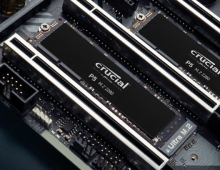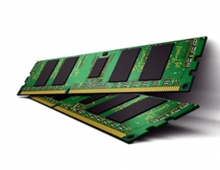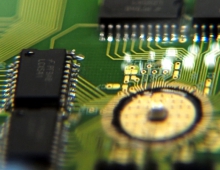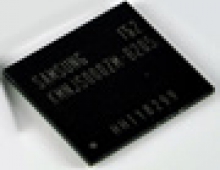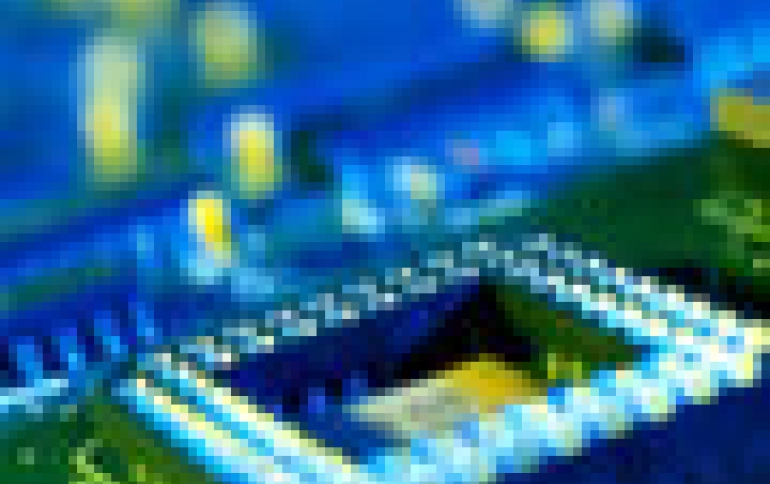
Phase-change Technology Promises Speedier Memory Chips
A team of scientists has announced a breakthrough in computer memory technology that heralded more sophisticated and reliable MP3 players, digital cameras and other devices.
Scientists from IBM, Macronix and Qimonda said they developed a material that made "phase-change" memory 500 to 1,000 times faster than the commonly-used "flash" memory, while using half as much power.
"Phase-change memory could replace disks, do instant-on computers, or carry your own fancy computer application in your hand", said IBM representatives.
Technical details of the research were to be presented to engineers gathered at the 2006 International Electronic Devices Meeting in San Francisco.
Researchers expected the discovery to anoint phase-change memory the successor to flash memory as the electronics industry continues a relentless quest to make devices smaller and more powerful.
"These results dramatically demonstrate that phase-change memory has a very bright future," said IBM vice president of technology T.C. Chen.
The new memory prototype developed by the scientists is just 3 nanometers high by 20 nanometers wide, offering the promise that the technology can be shrunk to smaller dimensions than could be attained by flash manufacturers.
"Many expect flash memory to encounter significant scaling limitations in the near future. Today we unveil a new phase-change memory material that has high performance even in an extremely small volume."
The new material was a complex semiconductor alloy that resulted from collaborative research at IBM's Almaden Research Center in the Silicon Valley city of San Jose, California.
Qimonda memory technology firm is based in Germany and Macronix is a "non-volatile" memory company located in Taiwan.
Computer memory cells store information as sequences of digital "zeros" and "ones" in structures that can be rapidly switched between two distinctive states.
Most computer memory devices are based on the presence or absence of electrical charge contained in a tiny region of a cell.
The fastest and most economical memory designs -- SRAM and DRAM, respectively -- use inherently leaky memory cells, so they must be powered continuously and, in case of DRAM, refreshed frequently as well.
These "volatile" memories lose their stored information whenever their power supplies are interrupted.
At the heart of phase-change memory is a tiny chunk of alloy that can be changed rapidly between an ordered, crystalline phase and a disordered, amorphous phase.
Because no electrical power is required to maintain either phase of the material, phase-change memory is "non-volatile."
"This is a much more robust memory technology," Narayan said. "It will be used more and more as flash gets into more and more trouble at small dimensions."
While the semiconductor alloy from Almaden is new, phase-change technology has been around for decades and has been used in DVDs and CDs, according to researchers.
Samsung and Intel have both been working with phase-change memory devices, according to Narayan.
"We have demonstrated the potential of the phase-change memory technology on very small dimensions laying out a scalability path," said Qimonda vice president Wilhelm Beinvogl.
"Phase-change memories have the clear potential to play an important role in future memory systems."
"Phase-change memory could replace disks, do instant-on computers, or carry your own fancy computer application in your hand", said IBM representatives.
Technical details of the research were to be presented to engineers gathered at the 2006 International Electronic Devices Meeting in San Francisco.
Researchers expected the discovery to anoint phase-change memory the successor to flash memory as the electronics industry continues a relentless quest to make devices smaller and more powerful.
"These results dramatically demonstrate that phase-change memory has a very bright future," said IBM vice president of technology T.C. Chen.
The new memory prototype developed by the scientists is just 3 nanometers high by 20 nanometers wide, offering the promise that the technology can be shrunk to smaller dimensions than could be attained by flash manufacturers.
"Many expect flash memory to encounter significant scaling limitations in the near future. Today we unveil a new phase-change memory material that has high performance even in an extremely small volume."
The new material was a complex semiconductor alloy that resulted from collaborative research at IBM's Almaden Research Center in the Silicon Valley city of San Jose, California.
Qimonda memory technology firm is based in Germany and Macronix is a "non-volatile" memory company located in Taiwan.
Computer memory cells store information as sequences of digital "zeros" and "ones" in structures that can be rapidly switched between two distinctive states.
Most computer memory devices are based on the presence or absence of electrical charge contained in a tiny region of a cell.
The fastest and most economical memory designs -- SRAM and DRAM, respectively -- use inherently leaky memory cells, so they must be powered continuously and, in case of DRAM, refreshed frequently as well.
These "volatile" memories lose their stored information whenever their power supplies are interrupted.
At the heart of phase-change memory is a tiny chunk of alloy that can be changed rapidly between an ordered, crystalline phase and a disordered, amorphous phase.
Because no electrical power is required to maintain either phase of the material, phase-change memory is "non-volatile."
"This is a much more robust memory technology," Narayan said. "It will be used more and more as flash gets into more and more trouble at small dimensions."
While the semiconductor alloy from Almaden is new, phase-change technology has been around for decades and has been used in DVDs and CDs, according to researchers.
Samsung and Intel have both been working with phase-change memory devices, according to Narayan.
"We have demonstrated the potential of the phase-change memory technology on very small dimensions laying out a scalability path," said Qimonda vice president Wilhelm Beinvogl.
"Phase-change memories have the clear potential to play an important role in future memory systems."

